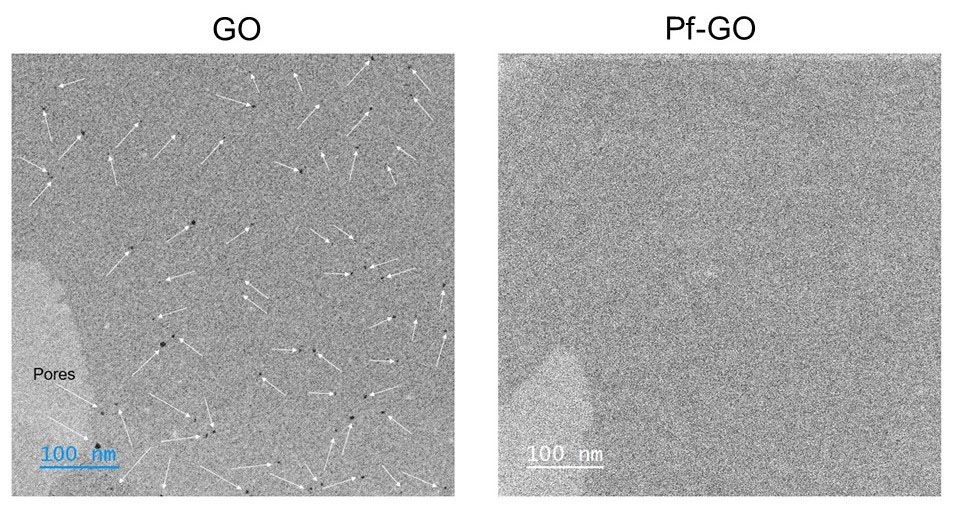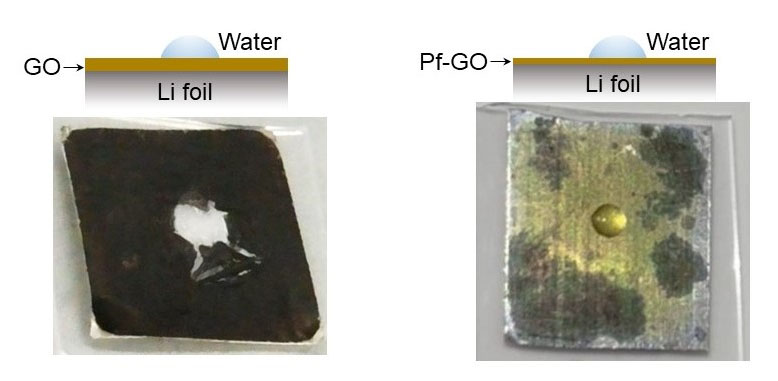| Sep 12, 2024 |
Breakthrough in proton barrier films using pore-free graphene oxide
(Nanowerk News) Kumamoto University’s research team, led by Assistant Professor Kazuto Hatakeyama and Professor Shintaro Ida of Institute of Industrial Nanomaterials, has announced a groundbreaking development in hydrogen ion barrier films using graphene oxide (GO) that lacks internal pores. This innovative approach promises significant advancements in protective coatings for various applications.
|
|
In their study (Small, "Anomalous Proton Blocking Property of Pore-Free Graphene Oxide Membrane"), the research team successfully synthesized and developed a thin film from a new form of graphene oxide that does not contain pores. Traditionally, GO has been known for its high ionic conductivity, which made it challenging to use as an ion barrier. However, by eliminating the internal pores, the team created a material with dramatically improved hydrogen ion barrier properties.
|
 |
| Numerous pores were observed in GO (indicated by white arrows). In contrast, no pores were visible in Pf-GO, even under high magnification. (Image: Kumamoto University)
|
|
The new graphene oxide film exhibits up to 100,000 times better hydrogen ion barrier performance compared to conventional GO films, as demonstrated by out-of-plane proton conductivity results from AC impedance spectroscopy. This breakthrough was further confirmed in experiments where the non-porous graphene oxide coating effectively protected lithium foil from water droplets, preventing any reaction between the lithium and the water.
|
 |
| When water droplets were applied to GO and Pf-GO films on the surface of lithium foil, a reaction occurred between the water and the lithium metal, releasing H2 gas (Left). In contrast, the lithium metal coated with a Pf-GO film showed no reaction with the water (Right). (Image: Kumamoto University)
|
|
The study also confirmed that hydrogen ions move through the pores in conventional GO, highlighting the significance of eliminating these pores to enhance barrier capabilities. This advancement opens doors to new applications in protective coatings, rust prevention, and hydrogen infrastructure.
|
|
This research marks a significant advance in materials science and could pave the way for next-generation coatings with enhanced protective properties. "Moving forward, we plan to harness the hydrogen ion barrier performance for practical applications, while also addressing the challenges posed by the 'pores' in the GO structure to unlock additional functionalities," explained Assistant Professor Hatakeyama as he outlined the next steps in his research.
|


